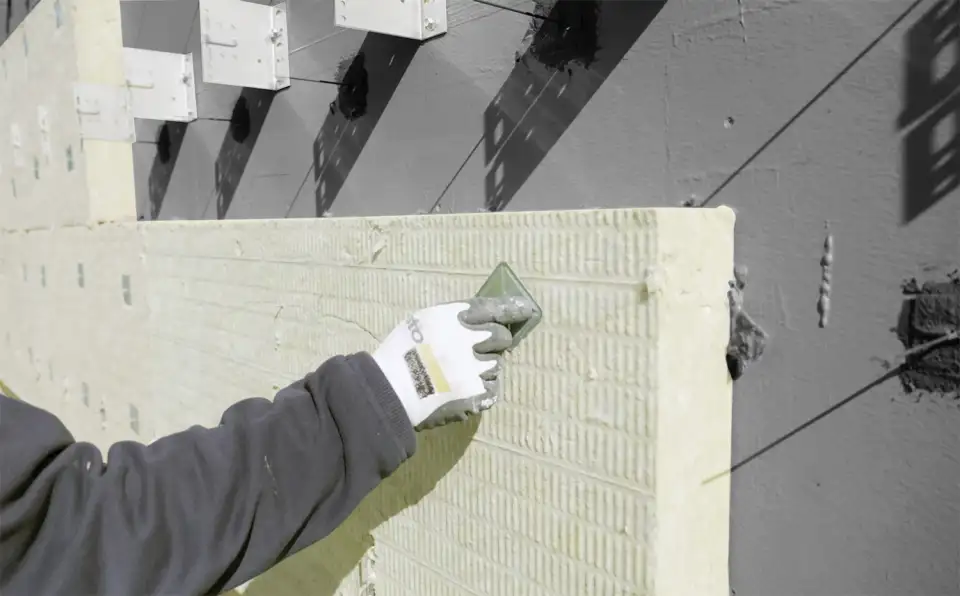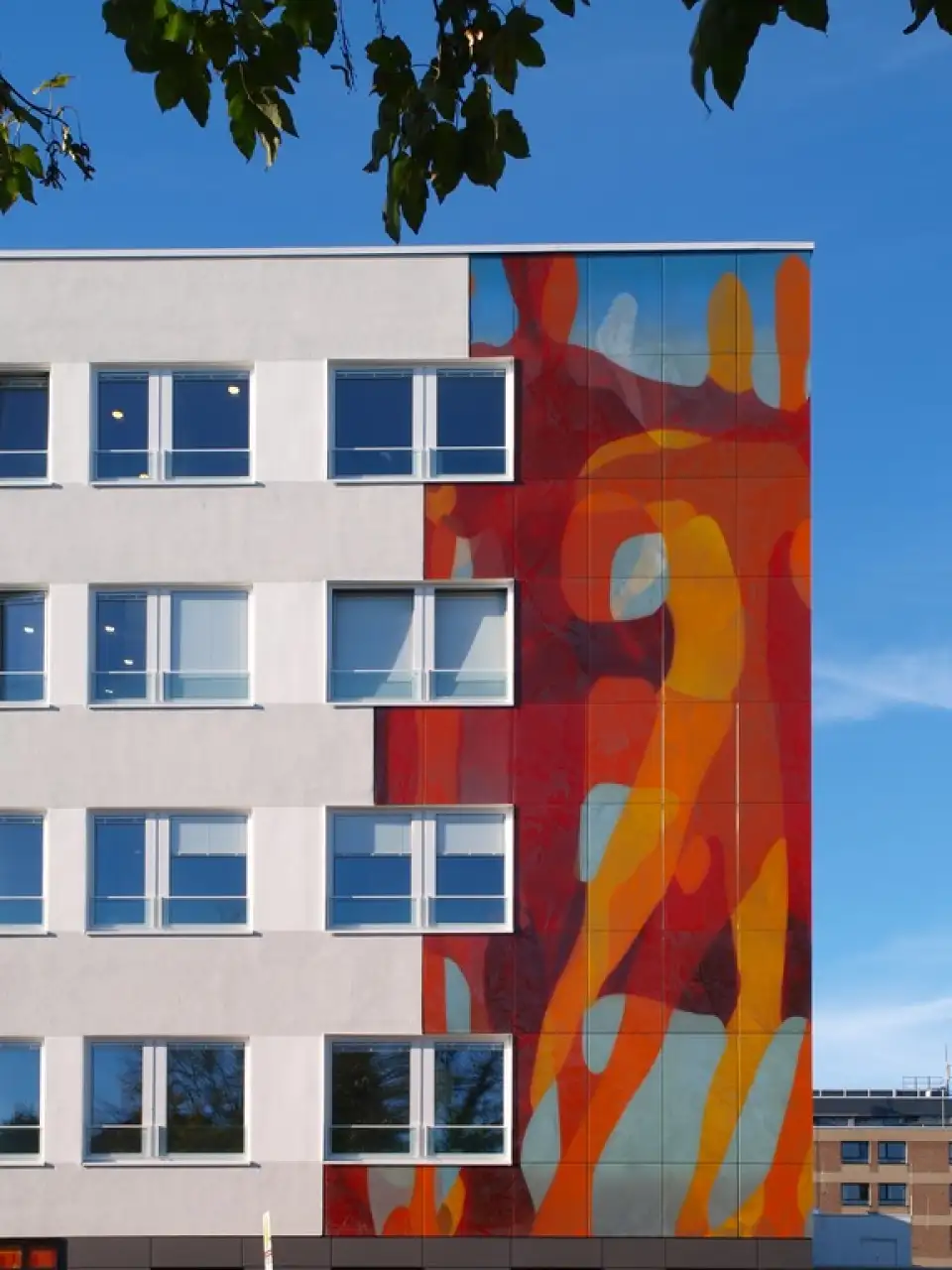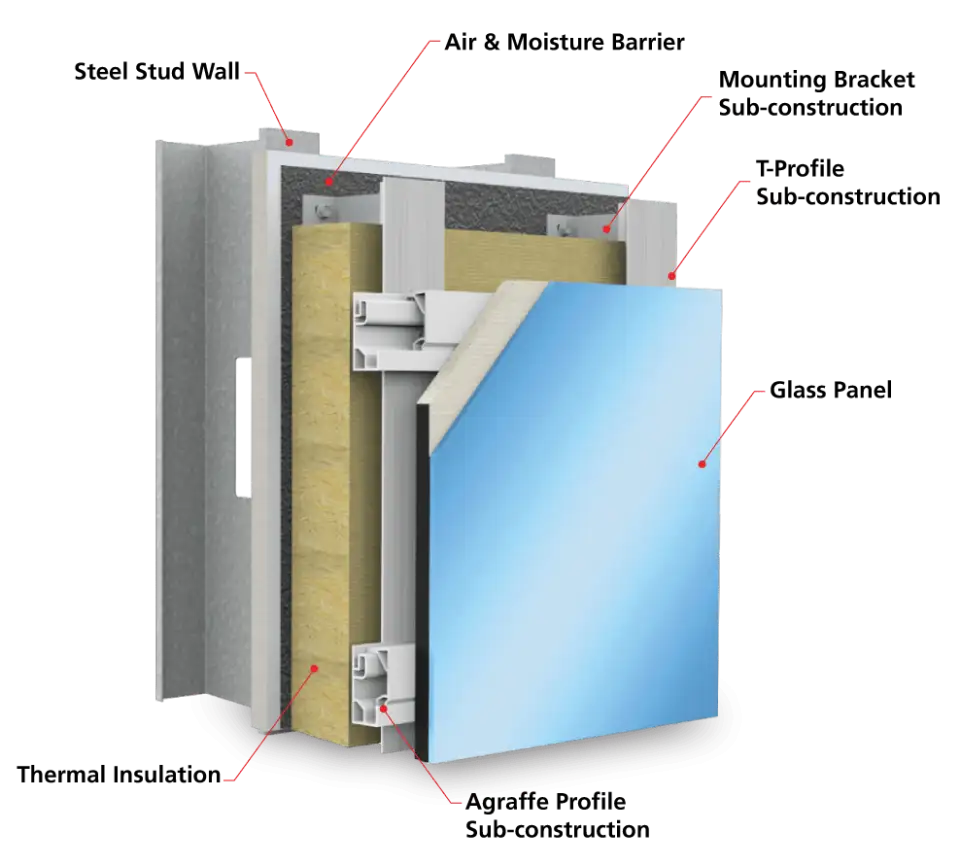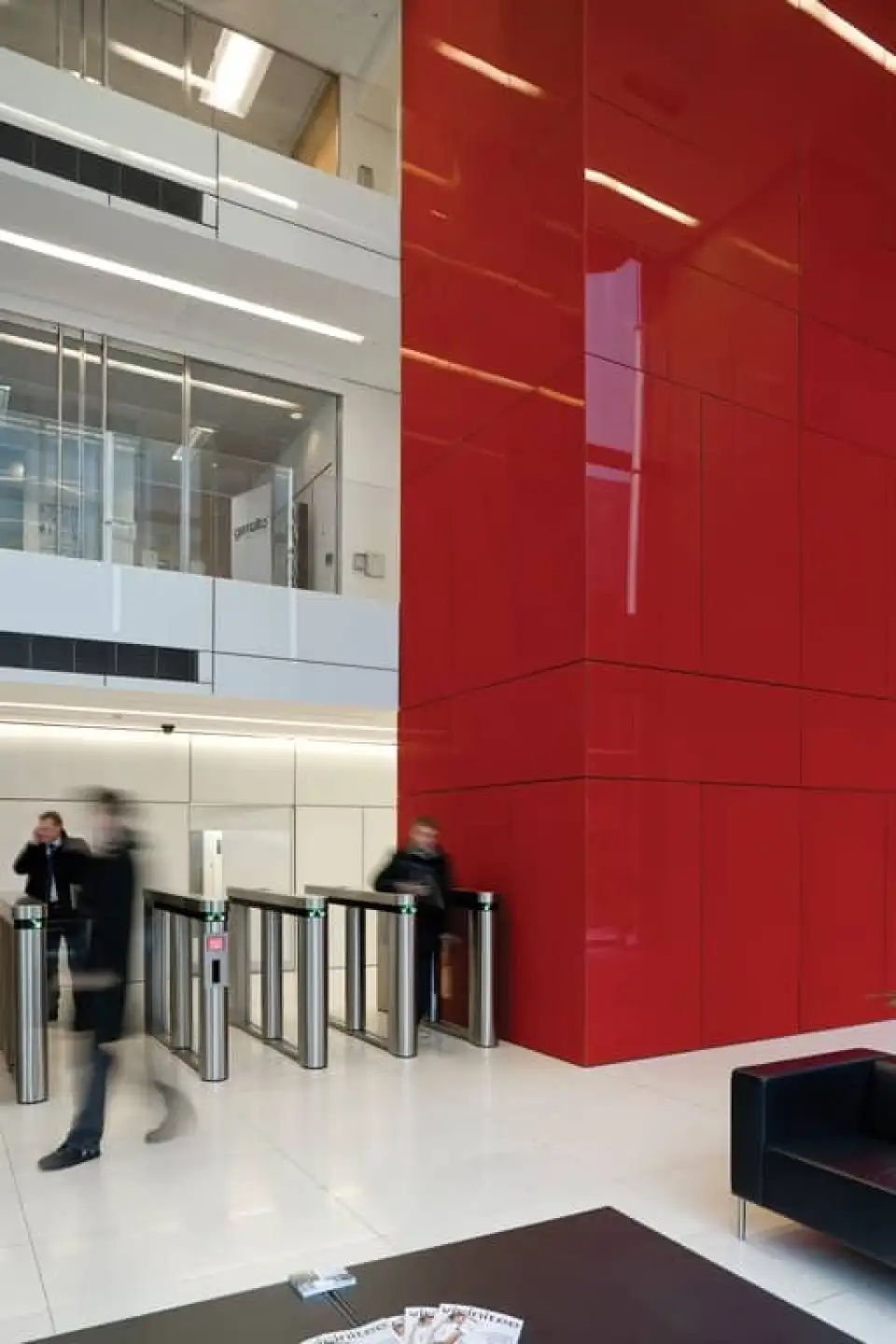
Remember the days of plain concrete box buildings and straight brick exteriors? When it comes to building facades, those days are most certainly in the past, especially when building to Passive House standards. Even in today’s more conventional construction environment, key players such as building owners and architects are pushing the boundaries when it comes to creativity. They want their latest project to be memorable, to have an impact before someone even enters the structure.
In effect, today’s architects double as artists when they design a building, and the exterior wall is their canvas.
Opaque glass rainscreens create a paradigm-shifting conversation when it comes to creativity and the external wall. Designers are no longer limited to the creation of a monochromatic façade. Introduce a glass rainscreen, and the possibilities become nearly endless.
Designers can deliver unique exterior facades and interior walls for opaque glass by using an array of custom colors and eye-catching digitally printed imagery, all of which are formatted on panels of various sizes and shapes.

Consider the Possibilities
Imagine if a Rolex store can highlight its logo with a stunning opaque glass storefront. Would that enhance brand awareness? Or a Tesla dealership features a brilliantly colored image of a soon-to-be released model captured in a reflective opaque glass façade. Might that catch a car shopper's eye? Perhaps an informative back-painted message on an opaque glass rainscreen would provoke thought at the entrance to a museum or a university library. These possibilities are realities with opaque glass rainscreen.
Creativity is only one of the considerations when selecting the right façade. The ever-increasing demand for high-performance external cladding means it must also be sustainable and energy efficient. Through ongoing innovation, product manufacturers are increasingly delivering on both fronts—aesthetics and performance—that help to set glass rainscreens apart.

Primed for Performance: The Systems Approach
A cutting-edge ventilated rainscreen system is engineered to provide superior weather protection and thermal performance for the life of a building. Today’s opaque glass rainscreen can be configured as a complete system that delivers performance with a layered building science approach. The essential components of the complete rainscreen system include:
Air and moisture barriers that provide a blanket of moisture protection for the exterior building wall;
Subconstruction, or furring, that anchors the opaque glass rainscreen to the substrate;
Insulation of varying thicknesses outbound of the exterior building wall that achieves thermal code compliance;
Air and ventilation cavity, the essence of the rainscreen principle that provides essential drainage and moisture management within the rainscreen cavity, and;
Durable and water-shedding opaque glass cladding, which serves to protect against bulk rainwater intrusion while delivering the aesthetic intent.
The traditional approach to specifying a rainscreen forces design professionals to configure a rainscreen system from a set of discrete components. Although a few industry-accepted components exist, they are discrete and not designed, tested, and warranted with all other components within the rainscreen assembly. Consequently, design professionals have no means of ensuring that performance and code compliance can be achieved as a system.
What differs for today's rainscreen designers that wasn’t available even a few short years ago is the option of turning to a single rainscreen system solution. This “complete system” approach delivers full integration of the rainscreen components—layer-by layer—by way of a tested and warranted system from a single manufacturer.
The complete approach simplifies the efforts of design professionals and greatly benefits rainscreen installers. It reduces design collisions often associated with using a collection of discrete components. Design collisions impact installers' efficiency and most often impact the functionality of the rainscreen.
The benefits of the complete approach can be further illustrated by the sheer reduction of the number of component manufacturers required. In some cases, it goes from four discrete component suppliers to a single, fully integrated rainscreen system source. However, one of the most significant benefits of a complete approach may be in the form of a single-sourced rainscreen system warranty, the value of which cannot be overstated.

Hitting the Mark: Performance Testing
As external cladding, opaque glass rainscreen systems are the first line of defense, protecting the building’s occupants from wind, snow, rain, cold, heat, moisture and more. That means the systems must undergo a battery of tests to validate their performance.
Because fire safety is so vital to building and building occupant safety, NFPA 285 is often thought of as the most important performance criteria. It is the benchmark fire test standard for evaluating fire propagation characteristics of exterior wall assemblies containing combustible components at a system level.
In addition to system fire testing, opaque glass rainscreen assemblies undergo testing for moisture and ventilation criteria in the form of AAMA 509, a voluntary test, as well as ASTM E330 wind pressure performance testing.
ASHRAE 90.1 sets the energy standard for buildings. When measured against this standard, opaque glass rainscreen systems can easily be configured to meet climate zone thermal performance requirements even for standards as rigorous as Passive House.

The Best of Both Worlds
Opaque glass rainscreen systems deliver design freedom that is unparalleled. Architects and designers can stretch their imagination, incorporating a wide palette of colors, textures, and other elements that can bring the building’s façade to life. They can deliver a completed structure with an eye-catching look that sets it apart.
Then there is the high level of confidence to all participants in the value chain when it comes to long-term performance. A system approach means fewer variables—a fully integrated, tested, warranted rainscreen solution, all from one manufacturer.